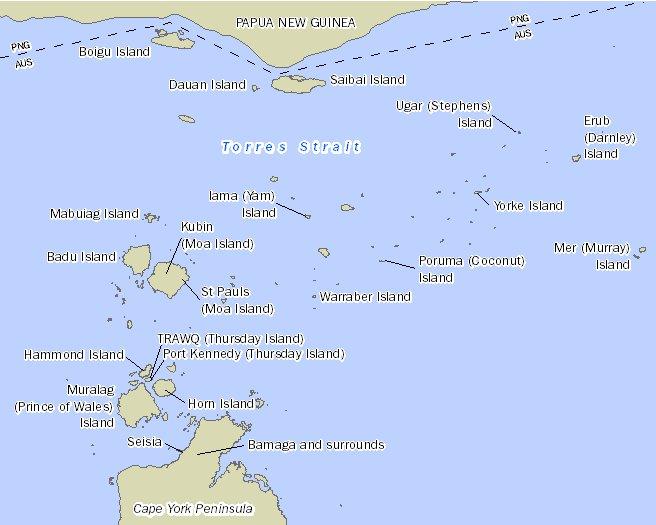Summary of findings
This article provides a snapshot of Torres Strait Islander people living in the Torres Strait region using data from the 2011 and 2016 Census of Population and Housing and the 2014-15 National Aboriginal and Torres Strait Islander Social Survey. It covers four broad topics and explores key characteristics such as: population distribution, migration, educational attainment, employment patterns, plus cultural and community connectedness.
The article arose from the relationship the Australian Bureau of Statistics (ABS) has developed with the Torres Strait Regional Authority (TSRA) and illustrates our commitment to returning information to Aboriginal and Torres Strait Islander communities and to deliver more effective regionally focussed information. It has been written in close collaboration with the TSRA to provide a local perspective of the trends revealed from ABS data.
The ABS signed an agreement with the TSRA in 2017 to produce a data library of statistics for the Torres Strait Region. The data library will provide valuable information that can be harnessed to gain a deeper understanding of regional social, cultural, economic and health trends that will help inform policy decisions. While the data library will contain comprehensive time series information on a broad range of topics, this article is only a snapshot of the Torres Strait region and its people. The findings in this article reveal the value of the data and the need for continued collection and analysis of data for Torres Strait Islander people in the Torres Strait.
Key findings for the Torres Strait region:
Migration:
- Around 1 in 5 of everyone living on the Islands in 2011 had left for mainland Australia by 2016. Torres Strait Islander people who left were most likely to be aged 15-24.
- Torres Strait Islander people aged 25-34 living on the Islands in 2016 were the age group most likely to have moved to the Islands between 2011 and 2016.
While there could be a range of reasons for these movements, one potential reason may be that young people are moving to the mainland for education and training and returning later for family/cultural obligations and commitments.
Education:
- More Torres Strait Islander people completed year 12 (46%) in the 2016 Census compared to the 2011 Census (44%), which may be indicative of the educational opportunities provided to high school students, such as the ability to complete TAFE certificate courses in year 11 and 12.
Household Financial Stress:
- The number of Aboriginal and/or Torres Strait Islander households spending more than 30% of their income on rental payments doubled between 2011 (73 or 5.3%) and 2016 (156 or 11.2%).
Introduction
Information presented in this article is about Torres Strait Islander people (footnote 1) unless otherwise stated.
The experiences and challenges faced by people living in the Torres Strait are unique. The Torres Strait Region consists of 18 island communities and two Northern Peninsula Area (NPA) mainland communities (footnote 2). The islands are dispersed over approximately 44,000 square kilometres, from the top of Cape York to the borders of Papua New Guinea and Indonesia. The nature of this scattered geography affects numerous aspects of daily life in the region, including service delivery, infrastructure, education and employment opportunities, and telecommunications.
This article provides some insight into life for Torres Strait Islander people in the Torres Strait region through information collected in the 2011 and 2016 Censuses of Population and Housing and the 2014-15 National Aboriginal and Torres Strait Islander Social Survey (NATSISS).
